Details
- Protocol Filtering
- SSL/TLS Scanning
- Additional options
ESET products automatically check the security of communications to and from your computer by default. In addition to standard network communications, SSL and TLS communications are also checked for security. See our Online Help topic for more information about Protocol Filtering and SSL/TLS scanning in ESET Smart Security Premium.
Solution
Protocol Filtering
Protocol filtering is enabled by default.
- Open the main program window of your Windows ESET product.
- Press F5 on your keyboard to access Advanced setup.
- Click Web and Email, expand Protocol Filtering and then click the slider bar next to Enable application protocol content filtering to enable or disable this feature.
- Click OK.
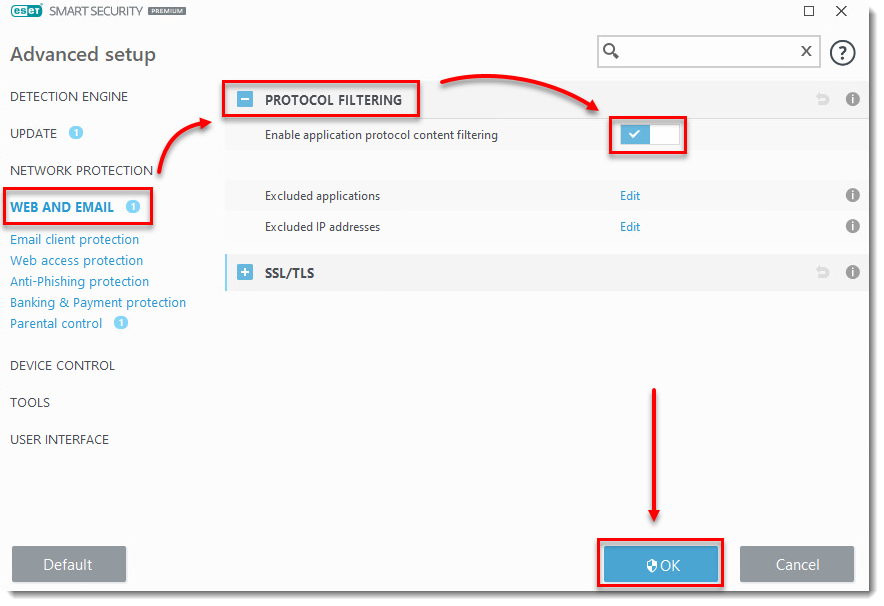
Figure 1-1
Exclude an Application or IP address from Protocol filtering:
- Next to Excluded applications or Excluded IP addresses, click Edit.
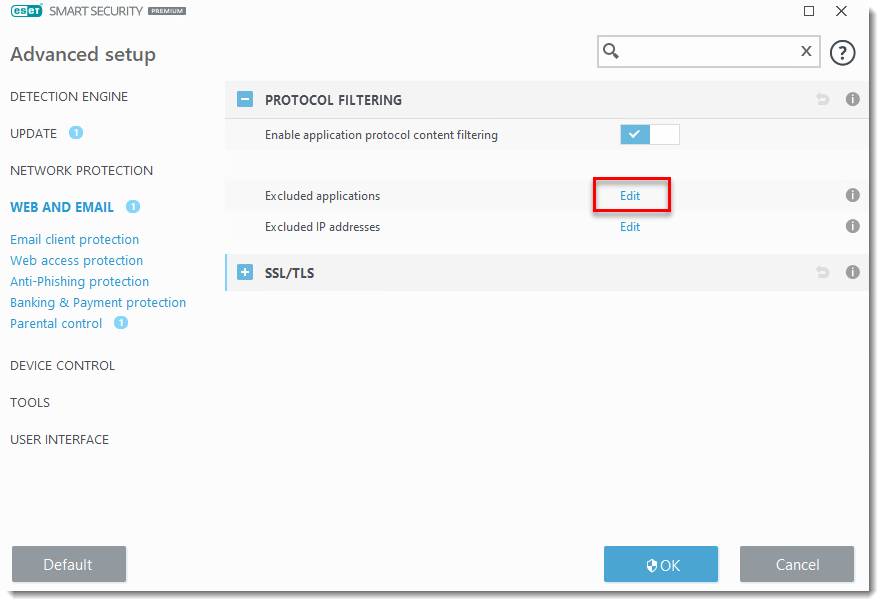
Figure 2-1
- Click Add.
- Select an application or type in an IP address and then click OK.
- Click OK. The new application/IP address has been added to the Protocol filtering exclusion list.

Figure 2-2
- To edit or remove an application/IP address from the Protocol filtering exclusion list, select the applicable application/IP address, click Edit or Remove and then click OK.
SSL/TLS Scanning
SSL/TLS Scanning is enabled by default.
To disable or re-enable SSL/TLS Scanning for troubleshooting:
- Open the main program window of your Windows ESET product.
- Press F5 on your keyboard to access Advanced setup.
- Click Web and Email, expand SSL/TLS and then click the slider bar next to Enable SSL/TLS protocol filtering to enable or disable this feature.
- Click OK.
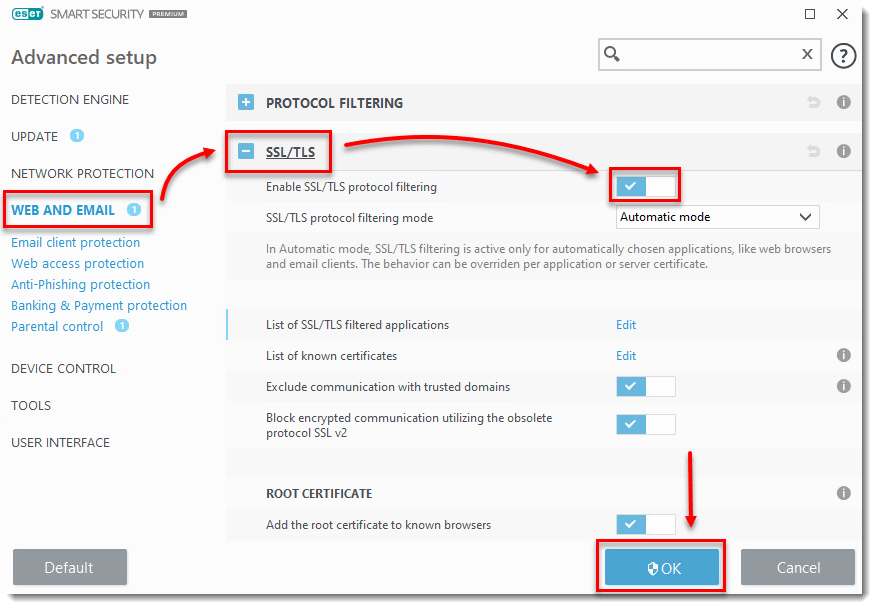
Figure 3-1
Remove a certificate from the known certificates list:
- Open the main program window of your Windows ESET product.
- Press F5 on your keyboard to access Advanced setup.
- Click Web and Email, expand SSL/TLS and then click Edit next to List of known certificates.
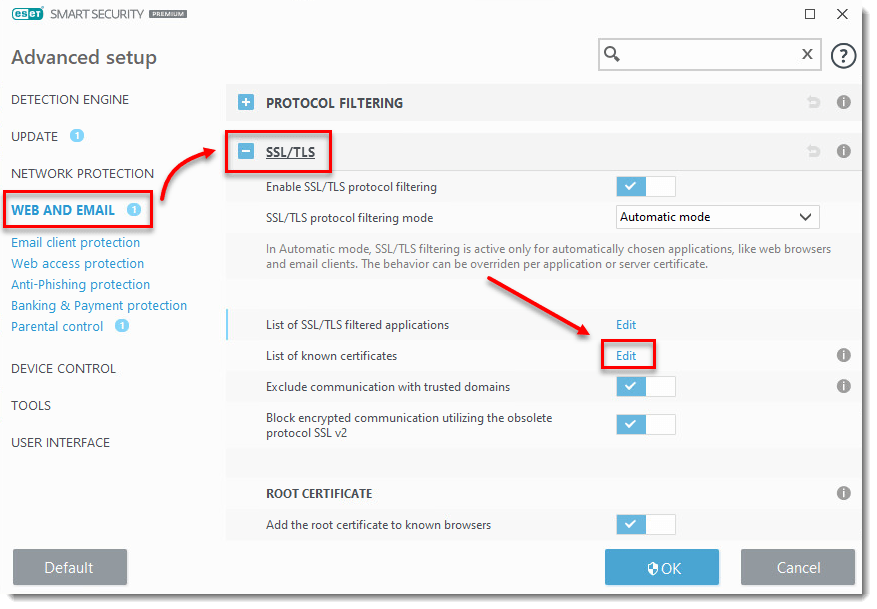
Figure 4-1
- Select the applicable certificate, click Delete and then click OK.
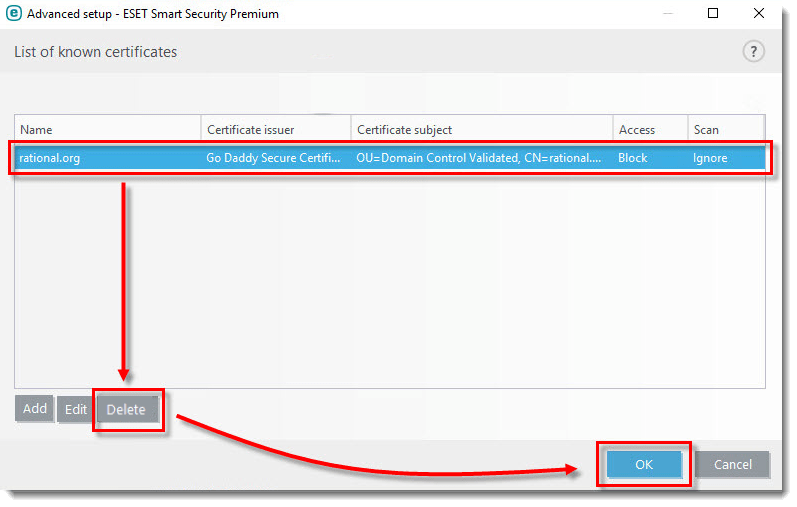
Figure 4-2
Additional options
- SSL/TLS protocol filtering mode: Use the drop-down menu to select the filtering mode you want to use. See our Online Help topic for descriptions of each available filtering mode.
- List of SSL/TLS filtered applications: To exclude a new application from SSL/TLS scanning, click Add. In the Application field, browse for the applicable application. The radio buttons in the Scan action field allow you to select whether to Scan all communications from an application, Ignore these communications, or Ask (you will receive a prompt asking what to do) each time communication is detected. Click OK.
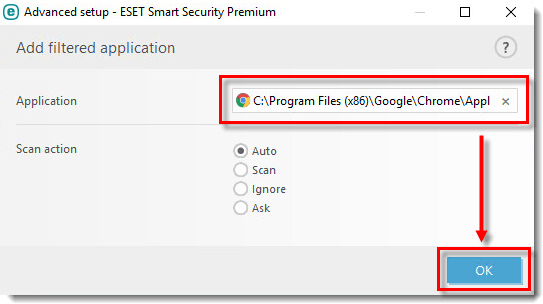
Figure 5-1
- To make a change or remove an application from the list, select the application and then click Edit or Delete. Click OK.

Figure 5-2
For additional information about SSL/TLS scanning options, see our Online Help topic.

